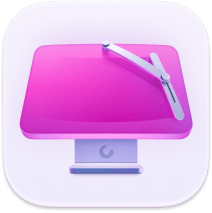macOS Tahoe Hackintosh: Installation guide & compatibility
Want info on macOS Tahoe Hackintosh? Okay, it’s technically possible to run Tahoe on non-Apple hardware with community bootloaders, but compatibility is touchy, hardware choices matter a lot, and every update can break your setup. Here's the current situation in 2025.
System requirements for a Hackintosh macOS Tahoe
Quick reality check first, Apple’s license for macOS Tahoe says the software is supported only on Apple-branded hardware. Anything else is outside the license, so treat the notes below as high-level compatibility facts.
|
Area |
What actually happens in 2025 |
|
CPU / chipset |
Unofficial boot loaders exist, but every OS update risks breaking the boot chain. No vendor support. |
|
GPU |
Modern macOS builds lack NVIDIA web drivers; AMD cards fare better historically, but this is still unsupported land. |
|
Updates |
Minor updates can brick a working setup until patches catch up. No guarantees. |
|
Services |
iCloud, DRM, and secure enclave features may fail or behave erratically. |
|
Legal support |
None. Apple’s license restricts macOS to Apple-branded hardware and VMs on the same. |
Installation methods people ask about
You’ll see community docs referencing OpenCore. It’s a boot loader used to inject data, ACPI tables, and kexts so macOS will start on non-Apple hardware. Here's a quick step-by step of how that could look.
Step 1: Create the macOS Tahoe Installer
Download the latest OpenCore build and the macOS Tahoe installer (via gibMacOS or a direct link). Plug in a 16GB+ USB and follow a simple USB-creation guide to make a bootable macOS installer. When finished, you’ll add OpenCore to the USB.
Step 2: Gather needed files
Create a folder for your EFI build. Download OpenCore plus essential kexts (Lilu, VirtualSMC, WhateverGreen, AppleALC, RestrictEvents, and the correct network kext). Add the recommended SSDTs for your CPU from Dortania. Use ProperTree for configuration.
Step 3: Build the EFI folder
Format the USB, create the macOS installer with createinstallmedia, then mount its EFI partition. Add an EFI folder containing BOOT and OC. Place OpenCore files, your kexts, SSDTs, and required drivers inside OC.
Step 4: Configure config.plist
Open config.plist in ProperTree and run Clean Snapshot. Add your SSDTs, kexts (in the correct order), GPU/audio properties, boot args (including -lilubetaall), and your SMBIOS (via GenSMBIOS). Add required UEFI drivers. Disable USB mapping kexts for now, as Tahoe support is incomplete.
Step 5: Adjust the BIOS Settings
Disable Secure Boot, Fast Boot, CSM, SGX, and CFG Lock. Enable Above 4G Decoding, Re-Size BAR, and XHCI Hand-Off.
Step 6: Install Tahoe
Boot from the USB. In OpenCore, choose Install macOS Tahoe. Erase your target SSD as APFS (GUID), then continue the installation. The system will reboot several times, each time choose the installer or macOS entry until setup completes.
Known issues in 2025
Graphics
NVIDIA on modern macOS remains a dead end. Don’t expect web drivers to appear for current releases.
Boot loaders
Updates to Tahoe can require re-patching before you can boot again.
Windows on Mac context
Apple Silicon Macs do not support Boot Camp. If you need Windows, it is virtualization or a PC. The same unsupported theme applies when you try to invert that and run macOS on a PC.
Best hardware for a Tahoe Hackintosh?
The best hardware is an actual Mac. If you need flexibility, consider a refurbished Mac mini. Those routes stay within Apple’s license and survive updates.
Note for readers testing on a real Mac
When macOS Tahoe feels sluggish after big changes, I open CleanMyMac (get your free trial here) > Performance > Maintenance and run Reindex Spotlight and Free Up Purgeable Space, so search and apps behave.

I also keep the CleanMyMac Menu App in the menu bar to watch memory pressure and quit noisy background items quickly. This tip is for genuine Macs only. It does not fix a Hackintosh; it just keeps a supported Mac responsive while you work.

A Hackintosh macOS Tahoe setup may be technically achievable with community tools, but it is outside Apple’s license and breaks easily with updates. If your goal is stability, security, and support, use Apple-branded hardware or a cloud Mac.

